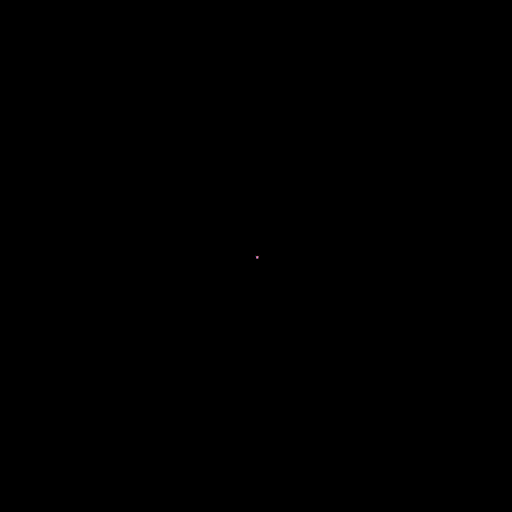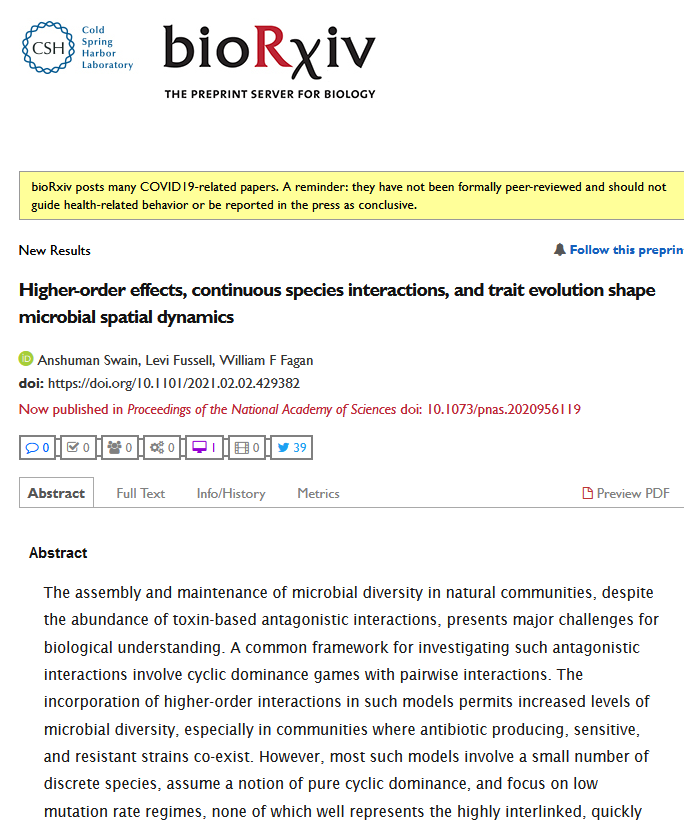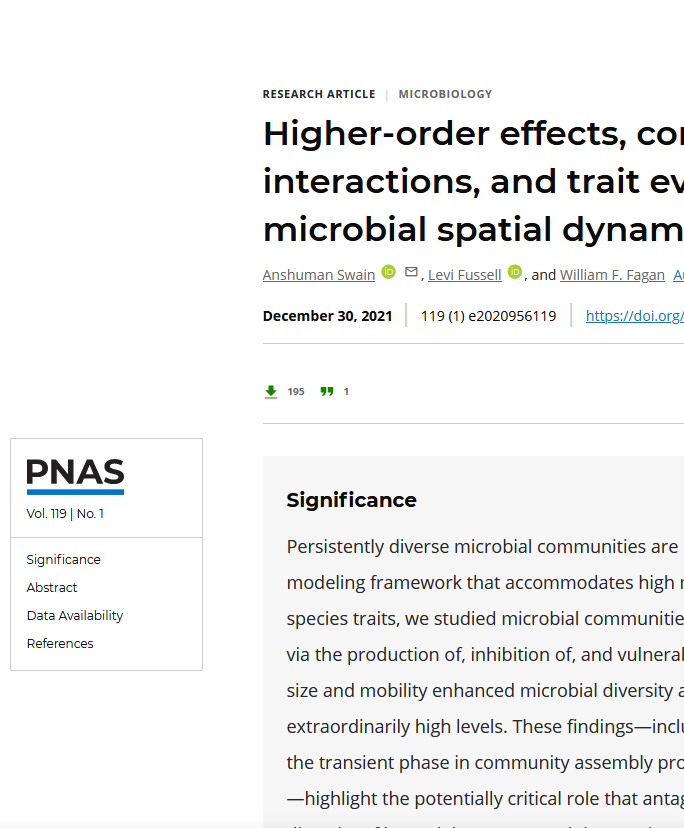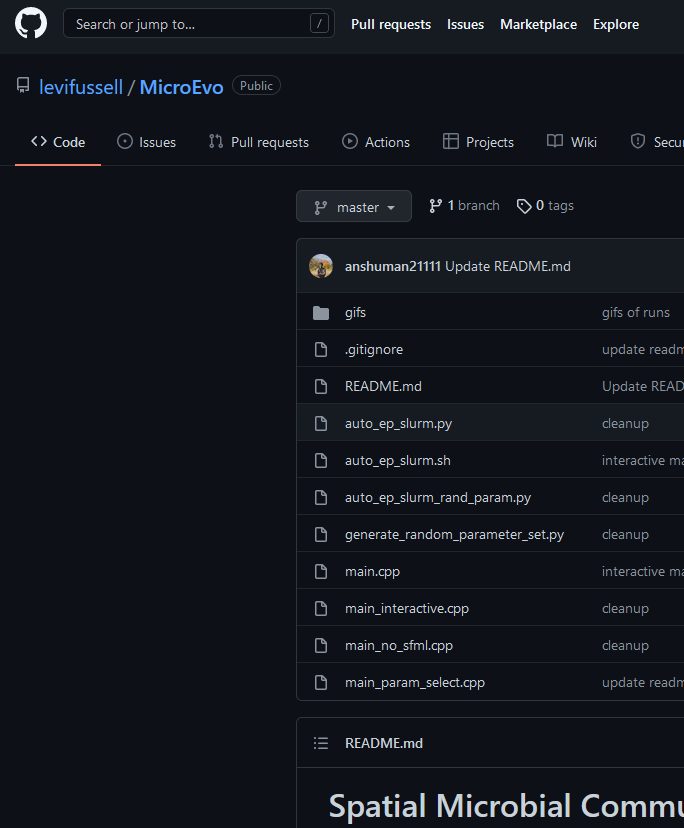This work focused on extending the classic rock-paper-scissors microbial competition simulation to a continuous domain which seamlessly enabled for evolutionary dynamics. Recent work has determined that an inhibitor mechanic can produce more stable dynamics in microbial simulations of three (or more) microbes. Because of the discrete nature of these models, it was unclear how to extend them to an evolutionary domain that allowed for a gradient of species variation. This model is the result of research into that question.











Above are a variety of beautiful dynamics that result from different parameterisations of our model. What you can see is that statically stable, dynamically stable, and chaotic dynamics are all exhibited. In our paper we dive into more detail about some of the emperical experiments we did on the simulations, and showed interesting correlations between the dynamics of the microbes and their traits.
I’m excited where the direction of this work is going; there is much unexplored territory that still needs to be understood. Further, parallelizing these simulations on a larger scale could allow for model fitting to real-life microbe experiments.
A code repository is available online where you can run your own simulations either for further research or to make some beautiful microbial art.
author = {Anshuman Swain and Levi Fussell and William F. Fagan },
title = {Higher-order effects, continuous species interactions, and trait evolution shape microbial spatial dynamics},
journal = {Proceedings of the National Academy of Sciences},
volume = {119},
number = {1},
pages = {e2020956119},
year = {2022},
doi = {10.1073/pnas.2020956119},
URL = {https://www.pnas.org/doi/abs/10.1073/pnas.2020956119},
eprint = {https://www.pnas.org/doi/pdf/10.1073/pnas.2020956119},
}


